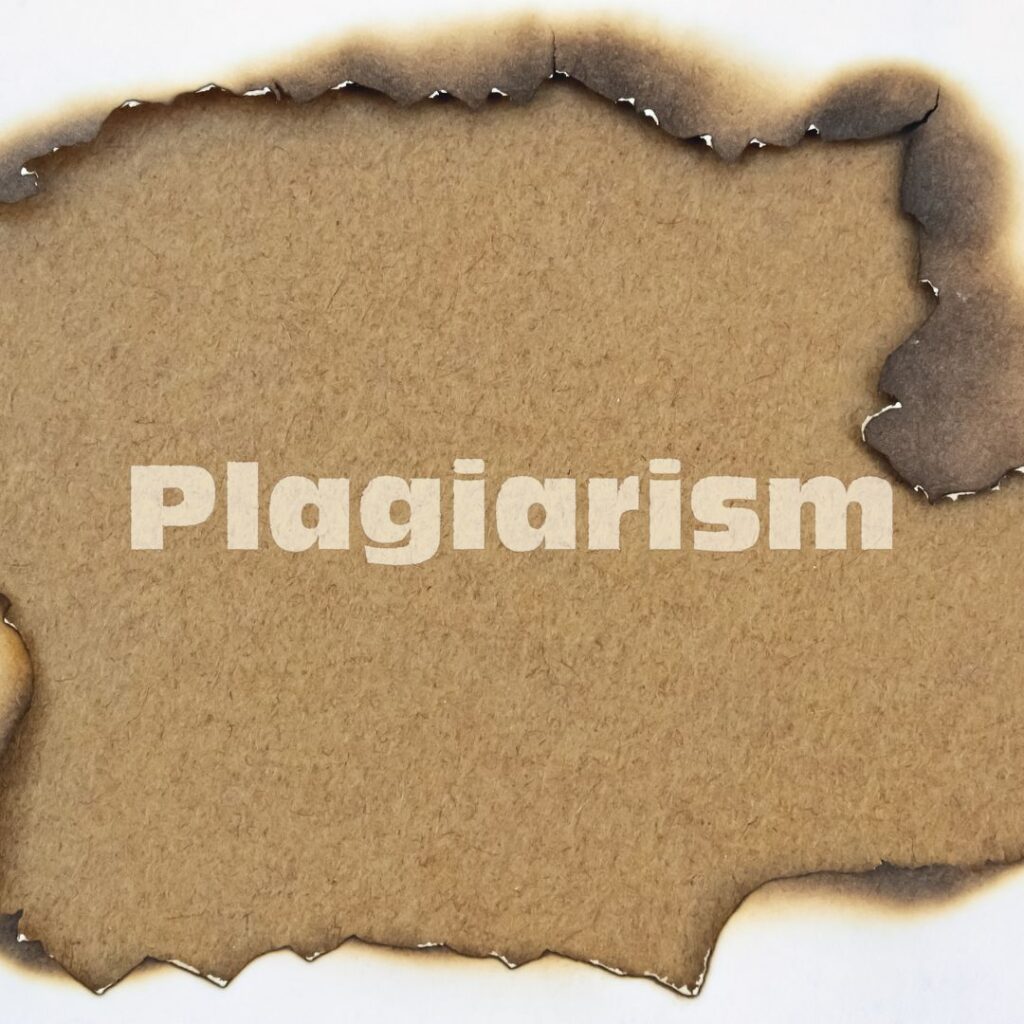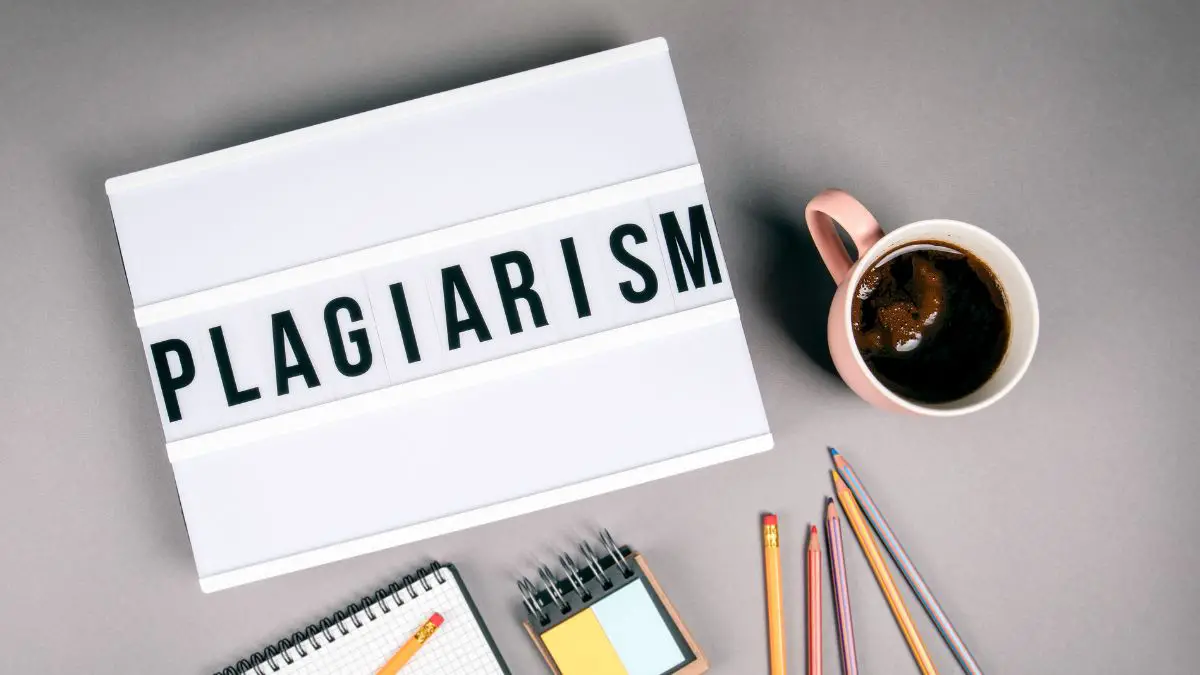Table of Contents
- Introduction
- What is Self-plagiarism?
- Why is Self-plagiarism a Problem?
- How to Avoid Self-plagiarism?
- Handling Self-plagiarism in Academic Publishing
- Conclusion
Introduction
What is self-plagiarism?
Self-plagiarism may seem like a contradictory concept. After all, plagiarism refers to using someone else’s work without proper attribution. How can you plagiarize yourself? While self-plagiarism may appear harmless, it can have severe consequences in academic and professional contexts.
Understanding Plagiarism
But before we understand self-plagiarism, let’s grasp the concept of plagiarism. Plagiarism is the act of using someone else’s work or ideas without giving them proper credit and presenting it as your own. This includes text, images, audio, video, and ideas. It’s considered an ethical violation in many fields, especially academic publishing and journalism.
The act of plagiarism can take several forms. Direct plagiarism involves copying someone else’s work word-for-word without providing quotation marks or citations.
Mosaic plagiarism or patchwriting refers to changing a few words or phrases but copying large parts of someone else’s work. Accidental plagiarism occurs when someone neglects to cite their sources, misquotes their sources, or unintentionally paraphrases a source too closely.
Regardless of the form it takes, plagiarism is considered dishonest and unethical. It disrespects the original author’s work and effort, and it can also create legal issues related to copyright infringement.
In academic and professional settings, plagiarism can lead to severe consequences, including loss of reputation and legal repercussions. In the academic world, it can lead to expulsion or loss of a job.
What is Self-plagiarism?
Self-plagiarism occurs when an author reuses their previous work in a new publication without properly citing the original source. Unlike regular plagiarism, self-plagiarism involves duplicating one’s prior research or written content. However, it is still considered dishonest and unethical in academic and professional settings.
Understanding the Concept
At its core, self-plagiarism involves representing old work as new and original content. This could take different forms:
- Submitting the same paper for multiple classes or publications
- Recycling parts of previous research in a new paper without attribution
- Reusing large sections of previously written content verbatim in a new work
In each case, the author fails to acknowledge the source of the duplicated information. This violates principles of academic integrity and can constitute copyright infringement.
Distinguishing from Plagiarism
While both are unethical, self-plagiarism differs from regular plagiarism in key ways:
- It does not involve stealing others’ work, only reusing one’s own
- It often arises from sloppiness or misunderstanding rather than intentional deception
- Self-plagiarism may not deprive others of rightful credit
However, it still reflects poor research practices and can damage an author’s reputation. Proper citation is essential, even when drawing from one’s previous work.
Forms of Self-plagiarism
Self-plagiarism can take many forms, including:
- Duplicate publication – submitting the same manuscript to multiple journals
- Text recycling – reusing parts of old papers in new publications
- Copyright infringement – republishing full works without permission
Any reuse of previous work without attribution constitutes self-plagiarism. However, the severity varies based on the amount reused and the intent to deceive.
Ethical Concerns
Self-plagiarism raises several ethical concerns:
- Violates academic integrity by misrepresenting recycled content as new
- Can constitute copyright infringement of previously published work
- Circumvents peer review process if undetected
- Compromises the advance of knowledge by recycling old ideas
While often unintentional, self-plagiarism undermines responsible research and publishing practices. Authors must correctly attribute all sources, including their previous work.
Misconception Surrounding Self-plagiarism
Many argue that self-plagiarism is impossible because you cannot steal from yourself. However, the issue is not about stealing but failing to acknowledge the source. Self-plagiarism violates academic integrity standards by presenting prior work as new and original.
Consequences range from damage to reputation, retraction of publications, loss of credentials, and even legal penalties. For students, self-plagiarism can result in failing grades or suspension. Clearly, this issue demands a thoughtful analysis.
Given the prevalence of self-plagiarism and its potentially serious ramifications, it is vital to analyze this concept and effective prevention strategies comprehensively. An in-depth examination will clarify what constitutes self-plagiarism, why it matters, and how we can promote awareness to uphold ethics.
This write-up aims to increase understanding of self-plagiarism, debunk misconceptions, and equip readers with strategies to avoid it. The goal is to inspire a culture of academic integrity through responsible research and publishing practices. With vigilance and proactive education, self-plagiarism can be significantly reduced.
Why is Self-plagiarism a Problem?
Self-plagiarism undermines the integrity and value of academic work. When researchers recycle old ideas or duplicate previous publications, they misrepresent the originality of their contributions. This erodes trust in research and can have profound ethical and legal consequences.
Damages Academic Credibility
Reusing previous work without proper attribution is deceptive. It makes it seem like the researcher is continuously generating new insights when, in fact, much of their output is recycled. This inflates publication records and misrepresents productivity. Self-plagiarism wastes reviewers’ time and journal resources spent evaluating work that is not entirely original.
Undermines Scientific Progress
Science advances through the dissemination of new knowledge. Self-plagiarism does not contribute anything novel to the collective understanding. Duplicated publications clog up journals and monopolize space that could have gone to original research. This slows the pace of innovation as discoveries take longer to surface.
Violates Copyright Law
Many publishers require authors to transfer the copyright of published articles to the journal. Reusing that content elsewhere without permission can constitute copyright infringement. This exposes self-plagiarists to potential legal action.
Citations do not absolve authors of the need to obtain permission for duplicated text. Self-plagiarism violates academic integrity. It leads to losing trust in research and can hinder scientific advancement. Institutions must educate students about ethical source use and hold researchers accountable for original work through better detection tools.
Though not as severe as plagiarizing others, self-plagiarism has meaningful consequences that undermine the entire scientific enterprise.
How to Avoid Self-plagiarism?
Self-plagiarism can be avoided by implementing some key strategies and best practices. First and foremost, proper citation and referencing of all sources is critical. Any ideas, words, or concepts that originated from another source must be appropriately attributed, even if it is your previous work. Using in-text citations and a comprehensive reference list will ensure all sources are acknowledged.
Secondly, it is essential to differentiate between new and previously published work. When submitting a manuscript or presenting research, clearly state if any part of the work has been published before. This transparency will help reviewers and readers understand the originality of the contribution.
Additionally, researchers should strive to generate new insights and build upon their previous work rather than simply rehashing old ideas. Self-plagiarism can be avoided by continuously pushing the boundaries of knowledge and exploring new avenues of research.
Keeping track of all publications and ensuring that each work is unique and distinct is also crucial. Creating a system to organize and document all previous publications will help researchers avoid accidentally duplicating their work.
Lastly, seeking permission from publishers when reusing previously published content is essential. Even if the content is authored by the researchers, obtaining permission ensures compliance with copyright laws and avoids potential legal consequences.
Self-plagiarism is a problem that undermines academic integrity, damages credibility, hinders scientific progress, and violates copyright laws. To avoid self-plagiarism, researchers should practice proper citation and referencing, clearly differentiate between new and previously published work, generate new insights, keep track of publications, and seek permission when reusing content.
Promoting responsible research and publishing practices fosters a culture of academic integrity, leading to a more trustworthy and innovative scientific community.
Handling Self-plagiarism in Academic Publishing
Handling self-plagiarism in academic publishing requires a multifaceted approach that includes prevention, detection, and corrective measures. It involves fostering an environment of academic integrity, providing clear guidelines about self-plagiarism, implementing effective detection tools, and enforcing strict consequences for violations.
Prevention
The first step to handling self-plagiarism is through education and prevention. Academic institutions and publishers should provide clear guidelines about what constitutes self-plagiarism and why it is unethical. This includes educating students, researchers, and authors about the importance of citing their previous work and obtaining necessary permissions for reusing content. Workshops, seminars, and training sessions can be conducted to educate the community about the issue.
Detection
Academic institutions and publishers can use plagiarism detection software to detect instances of self-plagiarism. These tools can identify matching text between documents, helping uncover duplicate publication or text recycling instances. However, these tools are not foolproof and may not catch all instances of self-plagiarism. Therefore, human oversight and manual checking are also necessary.
Corrective Measures
When instances of self-plagiarism are detected, there must be clear consequences. This could range from a simple warning for first-time offenders to more severe penalties such as retraction of the plagiarized work, loss of professional standing, or even legal action in copyright infringement cases. The severity of the penalty should reflect the extent of the self-plagiarism and whether it was intentional or accidental.
Follow-up
After corrective measures have been taken, it’s important to follow up with the individual to ensure they understand why their actions were wrong and how to avoid self-plagiarism in the future. This could involve additional training or mentoring.
Transparency
Academic journals and publishers should maintain transparency in their policies regarding self-plagiarism. They should clearly state their stance on the issue, the methods used to detect self-plagiarism, and the potential consequences of violating these policies.

Handling self-plagiarism in academic publishing involves a combination of education, prevention, detection, and corrective measures. Fostering an environment that values originality and academic integrity can significantly reduce instances of self-plagiarism.
Conclusion
In conclusion, self-plagiarism is a complex issue that challenges the integrity of academic and professional publishing. It involves reusing one’s previous work without proper citation or representation, presenting old ideas as new, and potentially infringing copyright laws.
Despite some misconceptions, self-plagiarism is not an innocuous practice; it undermines the advancement of knowledge, misrepresents an author’s productivity, and can lead to severe ethical and legal consequences.
Avoiding self-plagiarism requires a thorough understanding of its nature and implications and a commitment to uphold the highest standards of academic integrity. Researchers must strive to generate original insights, accurately cite all sources (including their previous work), differentiate between new and previously published work, and seek permission when necessary for reusing content.
Institutions and publishers play a critical role in preventing self-plagiarism by providing clear guidelines, implementing effective detection tools, enforcing strict penalties for violations, and fostering a culture of transparency and accountability. Through collective efforts, we can mitigate the impact of self-plagiarism, protect the integrity of academic research, and ensure the continued progression of knowledge.


1 thought on “What is Self-plagiarism?”